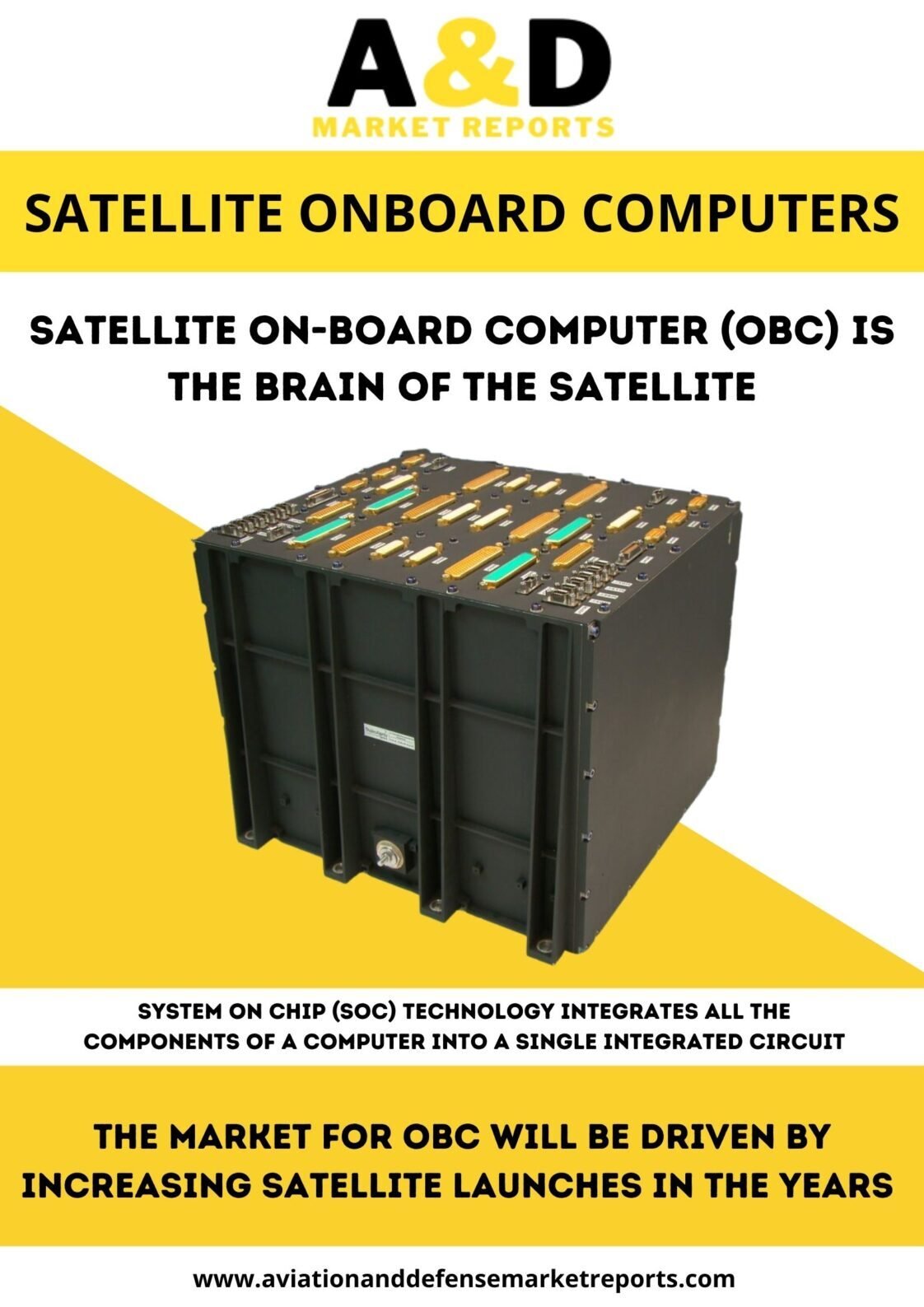Satellite on-board computer (OBC) is the brain of the satellite. OBC is programmed according to the mission parameters. OBC typically coordinates all the operation and sends instructions to different modules of the satellite. OBC is basically the computer on which software of the runs and executes various commands. Primary function of OBC includes gathering information, sending and receiving of signals form earth’s control station, diagnostics, error handling and recovery, orbit and altitude control. Additional functions include range monitoring and security. OBC is responsible for overall heath monitoring of the satellite. OBC consists of the microprocessor which connects to different modules. The architecture of the OBC is always evolving due to shrinking in size of the components and decreasing power consumption.
System on chip (SoC) technology integrates all the components of a computer into a single integrated circuit. This dense integration of components reduces the power consumption and take up very less space than traditional multichip which has equal functionality and performance. Various subsystems of the satellite includes communications subsystems(CS), command and handling subsystem(C&DHS), electrical power subsystem(EPS) and attitude control subsystem (ACS), thermal control subsystem (TCS), guidance, navigation and control(GNC).
Communication subsystem – Communication subsystem controls the transmitter and receiver of the satellite. Communication sub system enables the satellite to communicate with the ground station. It includes UHF radio for telemetry and an X band radio.
Command and handling subsystem – C&DHS take care of on-board operations and internal communications. It typically communicates with communications subsystem, payload subsystem, electrical power subsystem and propulsion subsystem.
Electrical power subsystem – EPS provides the electrical power generation through the solar panels. It stores the energy generated from the panels and stores them in a battery.
Propulsion subsystem- PS take care of orbit and altitude control. It performs the necessary manoeuvres for altitude adjustment and inclination adjustment.
Thermal control subsystem – TCS controls the electrical heaters and actuators and maintains the temperature in the specified range.
Attitude control subsystem – Controls the direction for the satellite subsystems. Pointing towards earth for CS and pointing towards the sun for EPS.
OBC application includes LEO – Low Earth Orbit, MEO – Medium Earth Orbit, GEO – Geostationary Earth Orbit and deep space. In orbit re- programmability of OBC ensures the versatility of the satellite, flexibility and survivability in harsh radiation environment where there are extremes in temperature.
The market for OBC will be driven by increasing satellite launches in the years to come and the revolution in technology which helps in development of compact and low power consuming OBCs. Penetration of 5G capability will also drive the market since satellites built with 5G architecture will connect with cars, ships, aircraft and other IoT devices. 5G signals will beam down from space to supplement the terrestrial infrastructure for 5G, it will also act as a backup during natural disasters such as floods, storms, typhoons and hurricanes. With 5G enabled satellites, users will be able to consume 8K videos on their mobile devices. Penetration of connected Autonomous and Unmanned vehicles will also drive the OBCs as multiple satellites will be required to ensure end to end continuous connectivity with these vehicles through 5G communication. In the next 10 years non terrestrial 5G and 6G network demand is expected to place around 55,000 – 60,000 satellites in LEO. LEO satellites are miniaturized weighing under 500kg and are at a distance of less than 2000kms from earth. These Leo satellites have lesser latency when compared to geo stationary satellites stationed at a distance of around 35,000kms. LEO satellites have latency of around 25-30ms which is a fraction of existing satellite links.
OBCs market will also be driven LEO satellites delivering high speed internet to business customers and developing nations. Tech companies such as Amazon, SpaceX and Oneweb are expected to deploy more than 25,000 satellites for global networking services. SpaceX aims to have more than 12000 satellites and amazon more than 3000 satellites in LEO orbit.
The other driving force of the OBC market will be the need to track the missiles throughout the flight. Missiles have traditionally been tracked by geo stationary satellites. But manoeuvrability aspect has added the need to track these hypersonic missiles and hypersonic glide vehicles throughout their flight. Development of hypersonic missiles have also increased the need for LEO satellites for comprehensive tracking capability. North Korea’s claim of having tested a hypersonic missile also increases the use case of a comprehensive tracking system.
Near term inhibition of the OBCs market will be the global chip shortage which is expected to last at least till the end of 2022.
